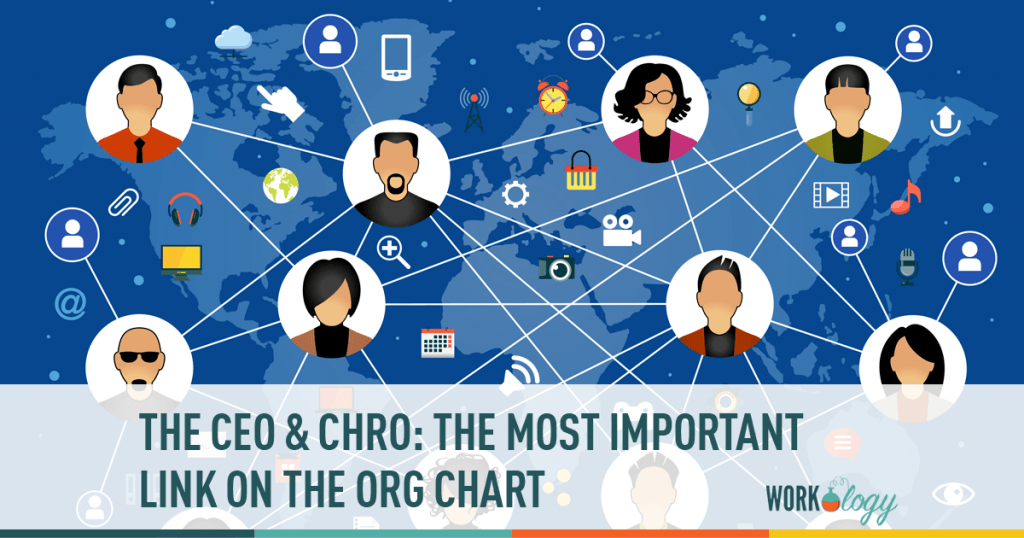In this era of “World War Talent,” the connection between an organization’s leadership team and its human resources department has never been more important. The CEO and HR leaders must be closely linked, which for many organizations requires a shift from past practice. Gone are the days of HR as an administrative cost center. HR leaders are increasingly expected to own the business plan from the perspective of talent — serving as a chief advisor and confidant to the CEO and a business partner to the operating team for all matters talent, including technology.
The Role of CHRO
The role of HR and its place at the leadership table have long been debated, but it has been getting fresh attention recently. A December 2014 Harvard Business Review article discussed why CHROs make great CEOs. The article noted the dramatic change in the role of CHRO in the past two decades. Ellie Filler, a senior client partner at executive recruiting firm Korn Ferry agreed:
“This role is gaining importance like never before,” Filler says. “It’s moved away from a support or administrative function to become much more of a game changer and the person who enables the business strategy.”
The article was based in part on a recent study by the Korn Ferry Institute that demonstrated that top-notch CHROs and CEOs share many of the same traits. According to the research, best-in-class executives (those in the top 10 percent of pay for their role) have a leadership style that motivates employees, develops future leaders and creates a winning culture. As CEOs are more often being evaluated on these qualities, it makes sense for them to be in closer contact with the leader of HR, who should be an expert on those same qualities.
Just as CEOs can learn from HR leaders, HR chiefs need to learn from leadership as they break new ground as business and strategy advisors.
Here are just a few of the strategic roles the new HR leader must perform:
- Understanding the customer impacts (not just employee impacts) of being an employer of choice. Being an employer of choice isn’t just about engagement and retention. A high quality, highly engaged workforce will develop products and service offerings that drive customer satisfaction, which in turn drive customer loyalty.
- Facilitating the development, documentation, and amplification of the company culture. As Peter Drucker points out, “Culture eats strategy for breakfast.” One would be hard pressed to find a CEO that doesn’t believe culture is a driver of both top and bottom line financial results, and who doesn’t work hard to reinforce culture through his or her own actions every day. CEOs rely on HR leaders to formalize the corporate culture and incorporate it in all aspects of the daily business rhythm, including talent acquisition, development, engagement, and management.
- Advocating for innovation and technology at all levels. Today’s HR leader must be a technology proponent, advising the CEO on how to best use technology to create efficiencies, bring talent insights to the forefront, and create a more collaborative and engaged workforce.
The last point is near and dear to my technology heart and may be the most urgent. On the whole, HR has long been criticized for being slow to adopt new technology. However, that has not been true for those who lead their industry. Those who have embraced technology have seen strong ROI from recruiting, onboarding, and talent management solutions, and have out-performed their peers in the market.
Today’s millennial-driven market heightens the sense of urgency to get on board with technology. The screening and onboarding process is a good case study. This process must send a strong signal to your candidate that they have made an exceptional career decision – that they are joining a business that values the efficiency and time of its people. An archaic paper-based process, with delays and little transparency, puts your organization at a huge disadvantage in World War Talent with respect to a specific candidate, and your employer brand as a whole.
CEO Needs Technology, Vision and HR
New technology decisions can be met with significant organizational resistance. HR leaders must have a strong vision as to how a particular technology supports the business strategy, and the conviction to serve as its champion in the face of doubters. They also need a true technology partner by their side, not merely a vendor, who understands their organization’s unique needs and will be there to support on both the business and technology front.
HR leaders are invaluable to any successful CEO and their organization. This critical executive must have strong business vision, understand how turn culture into a competitive advantage, while simultaneously being a savvy technology advocate who can confidently select technologies that will enable the strategic success of the company.
The CEO can’t do it alone. On the company organizational chart, the shortest link should be between these two.









